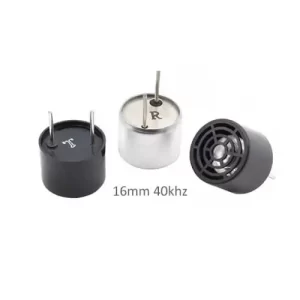PDC stands for Park Distance Control. It is a vehicle reverse collision avoidance radar. So PDC sensor is a kind of safety aid when the car parking or reversing. Usually we mount them on the front and rear bumpers of the car. PDC parking sensor detects obstacles mainly through ultrasonic waves. The radar can accurately detect the distance between front and rear vehicles. It assists the driver to park more conveniently. When the distance is too close, there will be an alarm. It will remind the driver to pay attention to the distance.
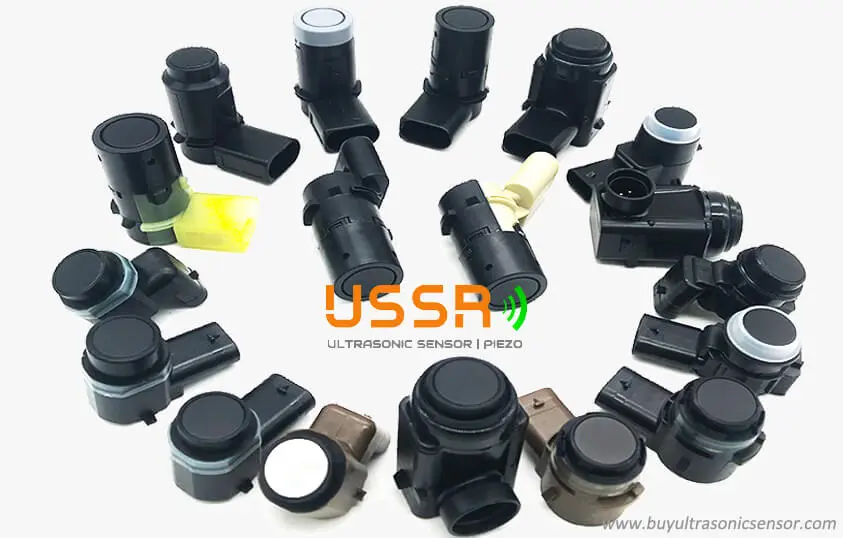
Why Choose Our Car PDC Parking Sensor?
We are the professional manufacturer of PDC sensor. Our company bases on OE standard. And passed the IATF16949 and CE certificates. USSR has a professional R&D team and automatic production facilities. Therefore, it can guarantee the high quality of reversing sensor.
| Item |
Automatic Parking Assist (APAS) Sensor |
PDC Reverse Sensor |
| Rated Work Voltage |
9V |
9V |
| Working Voltage Range |
8V~17V |
DC8V~10V |
| Operation Temp. |
-40℃~+85℃ |
-40℃~+85℃ |
| Storage Temp. |
-40℃~+95℃ |
-40℃~+95℃ |
| Protection Class |
IP69 |
IP69 |
| Ultrasonic Probe Frequency |
48Khz |
55.5KHz and 58kHz |
| Detection Range |
30cm--350cm |
30cm--150cm |
| Blind Zone |
≤0.3m |
≤0.3m |
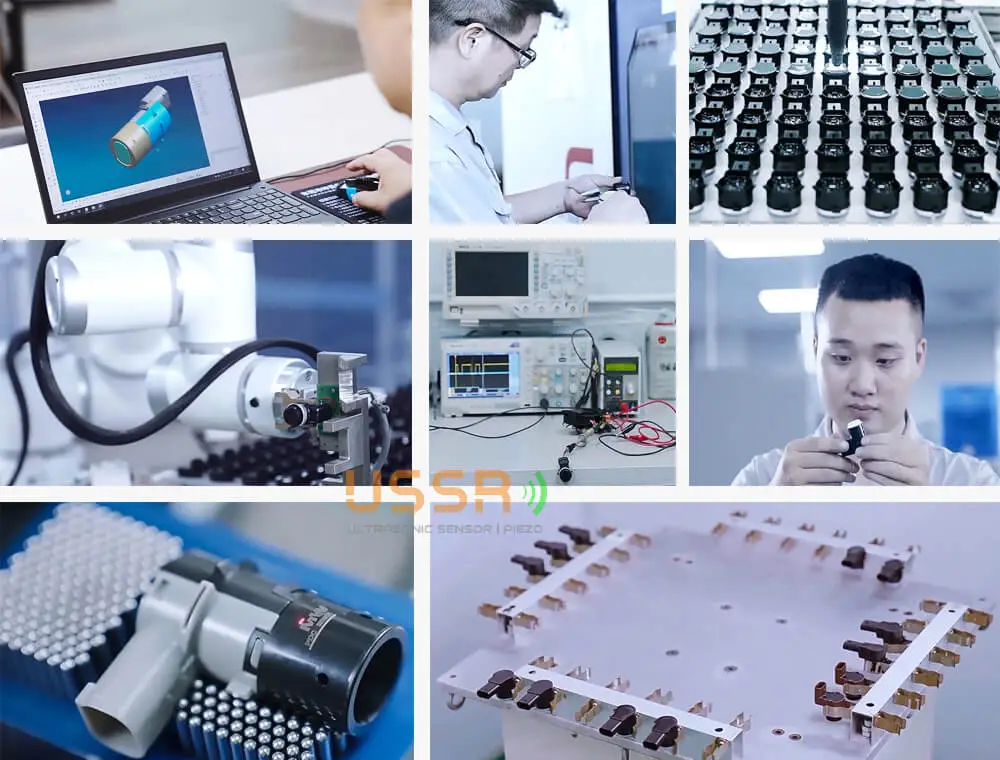
Highlights of Our Reverse Sensors:
① Digital factory: automatic production process, including SMT, soldering, potting and assembly, etc. So it ensures the consistency of the distance radar sensors.
② Strict control the quality of reversing radar. We will carry out many kinds of tests on the sensors, such as aging, high and low temperature resistance, waveform detection, sound pressure, anti-vibration performance and so on. There will be no problem of false alarms and missed alarms. In addition, our PDC parking sensor warranty is 1 year.
③ R&D customization ability: we have a professional R&D team. So we can develop new reversing radar. Moreover, our laser marking machine can customize the logo for you.
④ Short lead time: Our reversing sensor covers 90 per cent of the car models in the world. There is a large stock and quick delivery. In addition, if you purchase in bulk, our delivery period is about 15 days.
Basic Features of Our Park Distance Control sensor:
① Original car hole mounting: micro-hole type installation. So it does not affect the beauty of vehicle.
② Simple installation: plug and play. Convenient and quick to mount the PDC sensor. With anti-idiling slot, it can prevent inserting the wrong.
③ Precise distance measurement: sensitive detection and quick response. Besides, the detection range is wide. You can mount it on the front and rear. Avoid the blind zone of the moving vehicle. Helps reverse parking and side parking.
④ IP69 protection class: it is water-proof, shock-proof and dust-proof. Our reverse radar uses the process of adhesive sealing. And they pass long time power soak test. So it can eliminate the penetration of external water droplets.
⑤ Precise alarm alert: the alarm sound from the reversing sensor is a beep sound with frequency. The closer the obstacle is, the faster the frequency. If there is a long beeping sound, it means that you are about to hit an obstacle.
PDC reverse sensor vs reversing camera
Both of these are aids that assist the driver in the reversing manoeuvre. They can greatly reduce the risk to the vehicle owner when reversing. At present, these two configurations have also been very popular. Even in some car models have become standard or optional. So which can help us more with reverse back up sensor and reversing camera.
(1) Difference between backup sensor and reverse camera
① Different principles: The PDC parking sensor is an ultrasonic device installed at the rear of the vehicle. It detects ultrasonic waves. Then informs the driver whether there are obstacles behind.
But, the latter is a camera installed at the rear of the automotive. This camera also has the function of distance measurement.
② Different prompts: the latter can project the entire image behind the vehicle on the display screen. However, the rear parking sensor only emits a warning sound.
(2) Pros and Cons of Park Distance Control Sensor
The advantages of car reverse sensor are obvious. It can accurately judge the distance between obstacles and the rear of the car. Besides, sound prompt can make the driver more focused. There is no need to distract the driver from looking at the screen. In addition, reversing radar is relatively cheap. It is easy to install and maintain.
Disadvantages of car PDC sensor:
① Poor intuition: the driver can not visualise the specific location of the obstacle.
② Possibility of missed alarms: This is because the back-up sensor has a detection range. If the object is too small or too short, it can not be detected. Moreover, the detection range varies depending on the number of installations.
(3) Pros and Cons of Reverse Camera
The advantages of a reversing camera are also obvious. It can clearly see the image information behind the car. Besides, it is also able to recognise low or small obstacles. Some systems also provide auxiliary lines to guide the driver to adjust the direction. In addition, the reversing camera is not limited by acoustic signals. The detection range is wider.
Disadvantages of reversing camera:
① Higher price: It is more expensive than the car PDC parking sensor.
② The reversing camera still has limitations. When it is backlit, it cannot see the surrounding objects clearly. When driving in rainy and snowy weather, it is often stained with some mud and water. At this time, it is also impossible to see the obstacles behind.
③ The imaging distance accuracy is not high: the driver can only judge the distance between the vehicle and the obstacle by eyes. Moreover, the use of a wide-angle lens leads to image distortion. This makes the position and size of the object distorted. It increases the difficulty of judgement.
How does a car PDC parking sensor work?
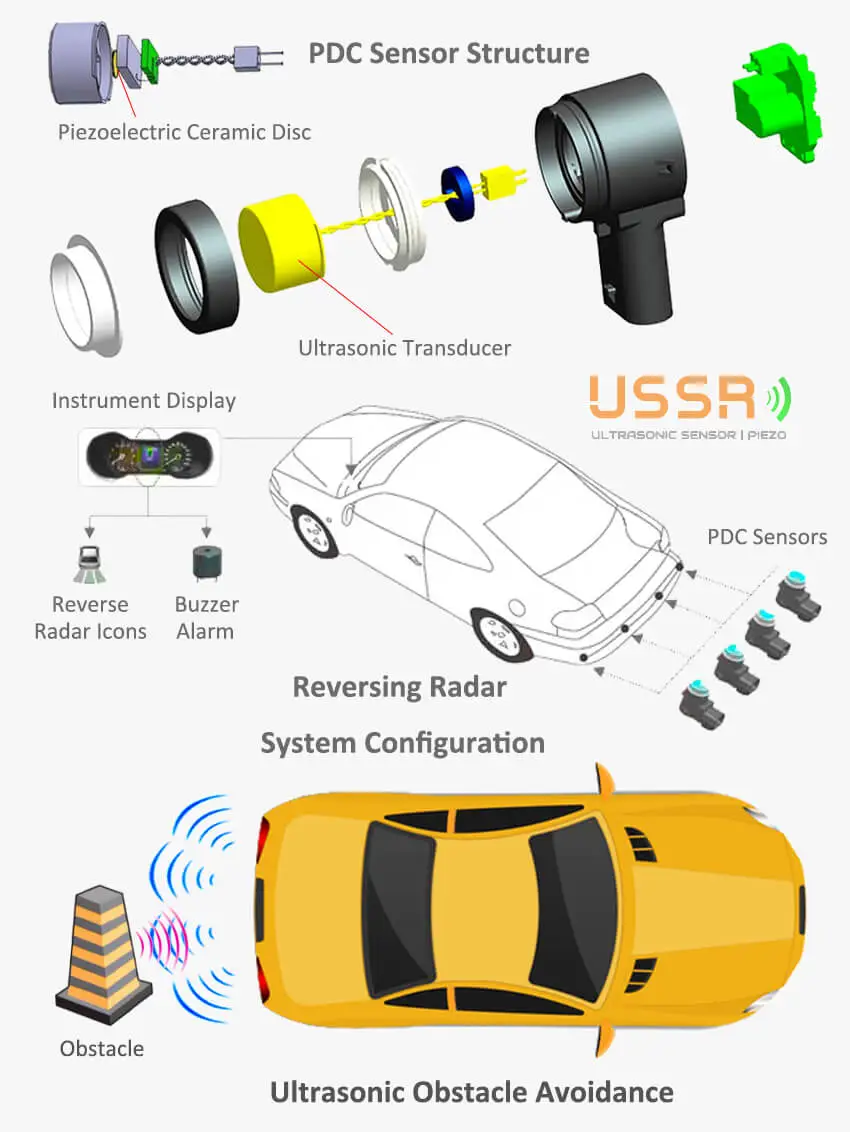
In order to understand the principle of reversing radar, we need to first know its structure and system components.
Firstly, the main parts of PDC parking sensor are the ultrasonic transducer and circuit board. The role of the transducer is to transmit and receive ultrasound waves.
Secondly, the main component of ultrasonic transducer is the piezoelectric ceramic disc. Its function is to convert electrical energy into mechanical energy. So it enables the ceramic disc to vibrate and thus emit ultrasonic waves.
Reverse radar system generally consists of the following parts: car PDC sensor, controller and display, buzzer. The working principle of the back-up sensor is as follows:
Rear parking sensor also uses TOF principle for distance measurement. It emits ultrasonic waves. Then calculate the time difference to get information about the distance to the obstacle. The ultrasonic frequency is usually 48kHz, 55.5Khz or 58KHz. And the common detection distance is from 30cm to 150cm. 30cm is the blind spot of reversing radar.
When the driver is reversing, push the gear to R. The PDC sensor on the bumper will send ultrasonic waves to the rear of the car. It generates an echo signal when it encounters an obstacle. The controller processes the echo signal. Then determines the direction and distance of the obstacle.
Finally, the buzzer emits an audible alert. When 1.5 metres away from the obstacle, the alarm system will emit a ‘beep’ sound. As the obstacle approaches, the frequency of the ‘beep’ sound increases. When the distance is less than 0.3 metres, ‘beeping sound’ will turn into a continuous sound. So the driver can make a clear idea when reversing.
Will the reversing sensor miss an alarm?
Yes. The car PDC parking sensor doesn’t always work. We need to know when it will fail. This will better ensure our driving safety.
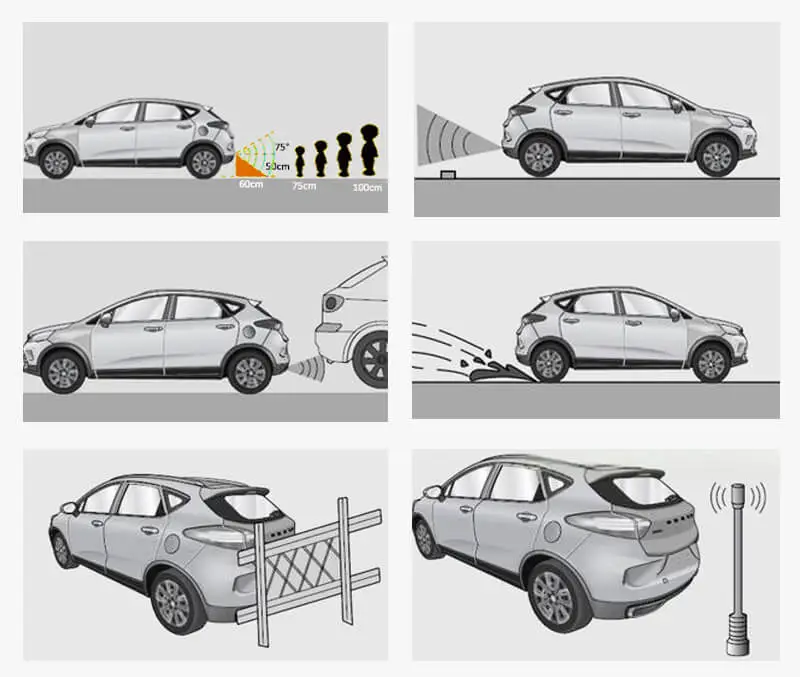
① Ultrasonic sensors are bound to have blind zone. So the reversing radar also has a blind spot. The general blind zone is 30cm. Assume that its installation height is 50cm. And the ultrasonic wave angle of the common radar on the market is 75°. Then 60cm behind the rear of the car is a blind zone.
In addition, the average height of our 4-year-old children is 100cm. And they often squat or sit to play. At this time, their height will be less than 50cm. So when reversing, these children are a safety hazard.
② Car PDC sensor cannot detect objects that are too tall or too high. For example, the 58KHz sensor angle is 85° for X-axis and 45° for Y-axis. When the obstacle is below or above a certain height, the radar will miss alarm.
③ The back-up sensor probe is obscured. Especially when it rains, sewage or mud can splash onto the car. They will obscure the probe of the reverse sensor. This will definitely affect the normal operation of rear parking sensor.
④ Rear park sensor cannot detect mesh or slender objects such as fences, railings, and cables. Ultrasound is not sensitive to these objects.
⑤ Sometimes, the battery is low or the car circuit is damaged. These may also cause the reversing sensor to not work properly.
⑥ If there is a high-frequency radio nearby, the park distance control sensor may give a false alarm.
Precautions when using the park distance control sensors
Many of us have equipped our cars with a reverse sensor system. It brings a comfortable operation experience to our daily reversing and parking. But, can we be completely safe? Actually, it is not. The PDC parking sensor is only a reversing assistance system. Good driving habits are an important factor in safe driving. We should flexibly observe the movement around the vehicle. And combine with the parking assistance system to reverse and park safely.
Therefore, we cannot rely too much on the back-up sensor. In addition, it also needs to maintain the rear park sensors.
① Clean up dirty objects on the surface of the rear bumper reversing radar probe in time, such as leaves, dirt, ice, snow, oil, etc.
② If affected by external force, the sensor surface will be dented and deformed. At this time, you should go to the 4S shop for replacement in time.
③ We should use universal detergent. Avoid using strong acids and strong alkalis. Because they will cause the paint layer on the probe surface to peel off or reduce its thickness. Finally, it will affect the detection distance of car PDC sensor.
④ Do not spray directly with high pressure water. Also don't squeeze or impact the surface of the back up sensor. Otherwise, it may cause it to malfunction.
Installation guide for car PDC parking sensor
Now we take the Honda CRV car as an example. And introduce the installation process of front and rear 8-probe reversing radar.
Notes:
1. Do not plug or unplug the power cord during installation. Otherwise, it will indicate a fault in the parking assist system.
2. If a failure occurs, disconnect the battery again. Check whether the power cord is connected properly. After replugging and restarting, it will automatically recover.
Working mode:
Shift to R gear. Front and rear park sensors work and display at the same time.
Shift to D gear. When speed below 15km/h, the front four back up sensors work. Above 15km/h, the front four radars will not work.
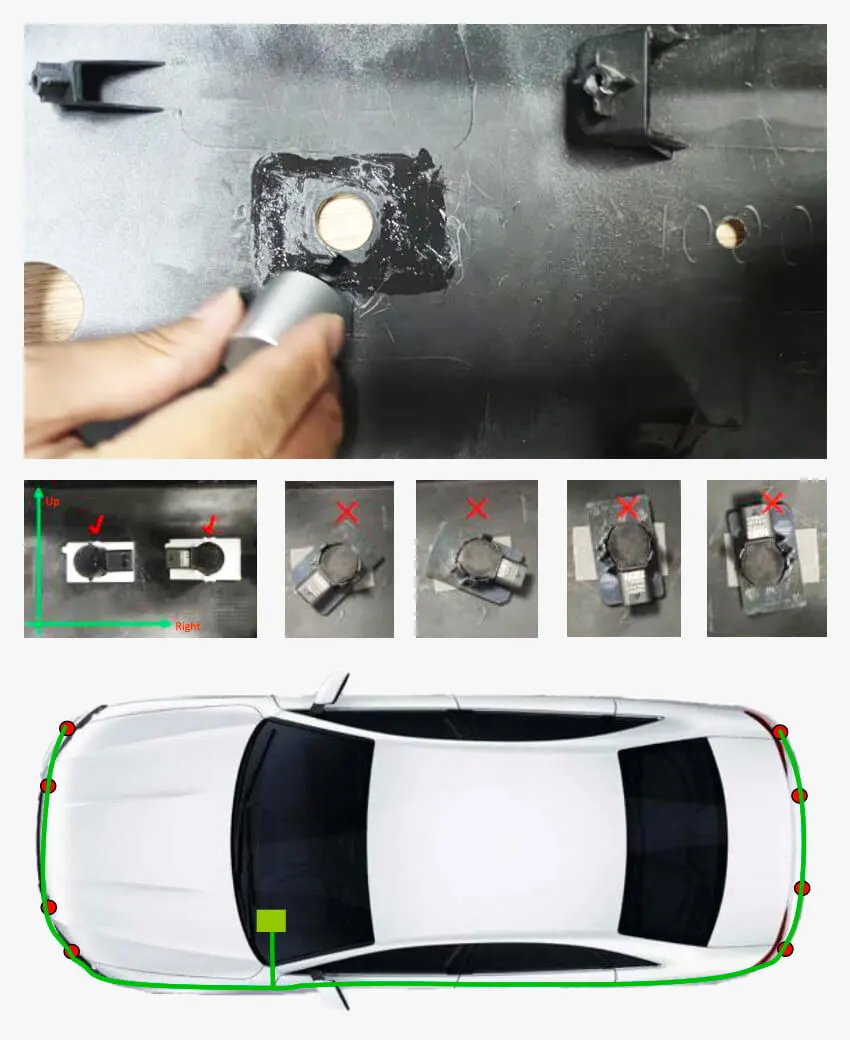
Specific installation steps:
① Firstly, determine the PDC sensor installation position
The best installation height is 500~600mm. If it is 400~500mm, there should be an upward angle. If the plane is lower than 470mm, there is a risk of false alarm.
② Secondly, drill the installation hole
Find the installation point inside the bumper. Then drill the hole with a drill. When using the hexagonal hole, do not shake it. Otherwise, there will be burrs or scratches.
If the original car bumper has an icon of the radar installation position, please drill the hole at this position. If there is no icon, please follow the steps below. Firstly, measure from the lock nose of the trunk with a box ruler. Determine the middle point. Then measure 22.5CM to the left and right. In this way, determine the two positions in the middle. Afterwards, measure 45CM to both sides. So determine the other two installation points.
③ Install the embedded bracket
Clean the installation position inside the bumper. Then coat the adhesion promoter. Wait for the adhesion to dry. Afterwards, install the bracket. Please make sure the horizontal installation, not tilting. The radar rubber ring fits tightly around the bumper opening. There should be no deviation. Otherwise, the car PDC parking sensor will give a false alarm.
④ Installation and wiring of the reverse sensor host
The host should be as far away from the high power components and antenna as possible. We can place it under the steering wheel. The plug port faces downward. Please operate the wiring without loss. The original car CAN line plug is on the lower left of the steering wheel. Fold open the cover. Find the plug in the red circle as shown above. Connect it directly to the host wiring harness.
FAQ
Q1: Are your reversing sensors original?
A1: No. Our car PDC sensors are OEM replacement parts. They are not original, but we can ensure their quality.
Q2: What kind of cars do you provide rear parking sensors for?
A2: We provide backup sensors for more than 80% of car models. For example, there are BMW pdc parking sensors, such as e60, e36, e39, e46, e53, e61, e63, e65, e87, e90, e91, f10, f11, f20, f30, x1, x3, x5, etc.
Q3: How far can your parking sensor detect a car?
A3: The max detection range of park distance control sensor is usually 1.5 meters. And if APAS sensor, it can detect to 3.5 meters.
Q4: How much do your rear park sensors cost?
A4: Different car models, different prices. If you need 4pcs Toyota 89341-02010 sensor, the unit price is USD10/pc. Of course, we can provide wholesale prices for bulk order.
Q5: Do you also have the mounting holder bracket for car reverse sensor?
A5: Yes. We also supply these holder brackets for rear park sensors.
Q6: Can we mount the rear parking sensor onto the front bumper?
A6: Yes. You can install the car PDC sensor onto both front and rear bumpers.
